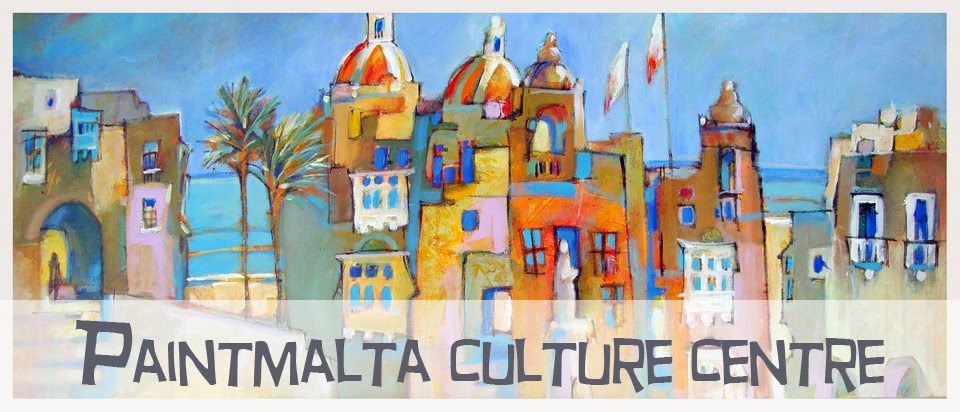 |
| having a good laugh in class |
 |
| cat napper in the class |
Yes indeed that is a cat. Cookie by name, attention grabber by trade.. For a while, he graced us with his scintillating presence although he wasn't the most attentive in class. Then one day he just got up and ran away. Sadder things have been known to man. I personally am not a cat person. Which brings me to one of the quirkiest aspects of the Maltese language. Cat in Maltese is Qattus, pronounced A'toos. Its got that silent back-of-the-throat Arabic sound although spelled with a Q. The silent Q is the stumbling block of many an uninitiated visitor to Malta, or rather I should say separates the them that knows the lingo and them that dont. The spelling of many words in the language look like proper tongue twisters for visitors and must give rise to some hilarious attempts to pronounce place names. Take Xemxija for instance.Its pronounced Shemshiya. Not Exemexiya, which sounds like something that requires a long period of quarantine. This reminds me of the group of painting holidayers I hosted whose creative genius manifested itself in their interpretation of Maltese place names. One evening after their day off wandering around the island we gathered for dinner and they proceeded to recount their adventures. "Oh it was wonderful! First we drove up to Dingli and saw Flimflam Island (Filfla) then stopped at the Tequila Craft Village (Ta'Qali)...later we drove through a place called Ze Bug (Zebbug) and ended up in Surrey (Zurrieq) to visit the Blue Grotto....". One day I must do a cartoon of the Map of Malta according to these and many other hilarious interpretations of Maltese place-names.
Weird spelling is the result of the disparate fusion of a Semitic-based language with the Latin alphabet. This unlikely partnership reflects both the richness and at times the schizophrenic nature of Maltese culture. I am bemused by the fact that a considerable number of Maltese don't know how to speak their own language and are quite happy to remain that way. This strange disengagement with one's own language goes back a way. Right back to the Knights of Malta who during their occupation of the country demoted the local lingo to a kitchen language. Hello? You only speak Maltese? Use the tradesman's entrance please, thank you. If you wanted to rub shoulders with the upper-crusters, you had to speak Italian, or French. Since the British occupation, English became the lingua franca and social climbers or people hailing from good stock preferred to speak English. The attitude has stuck, unfortunately. Its an attitude which also has assumed a geographical identity and has over time given rise to Malta's very own Mason-Dixon Line.
 |
| smoker's corner |
Weird spelling is the result of the disparate fusion of a Semitic-based language with the Latin alphabet. This unlikely partnership reflects both the richness and at times the schizophrenic nature of Maltese culture. I am bemused by the fact that a considerable number of Maltese don't know how to speak their own language and are quite happy to remain that way. This strange disengagement with one's own language goes back a way. Right back to the Knights of Malta who during their occupation of the country demoted the local lingo to a kitchen language. Hello? You only speak Maltese? Use the tradesman's entrance please, thank you. If you wanted to rub shoulders with the upper-crusters, you had to speak Italian, or French. Since the British occupation, English became the lingua franca and social climbers or people hailing from good stock preferred to speak English. The attitude has stuck, unfortunately. Its an attitude which also has assumed a geographical identity and has over time given rise to Malta's very own Mason-Dixon Line.
Maybe my genetic make-up has left me with linguistic skills that are very thin on the ground, or its the result of a lifetime of swanning around in ex-British colonies, from East Africa to the Middle East to Malta, where learning the local lingo simply wasn't necessary- everybody spoke or wanted to learn English.Or maybe Maltese really is a difficult language to learn. Several months down the line and I still have difficulty speaking it. More than likely its because I don't get enough practice, and,truth be told, I'm lazy. Whatever the case, I am determined to crack it and under Daniela's patient and professional approach to teaching, no doubt one day it will all fall into place. And then finally I'll be able to figure out what the neighbours have been saying about me.
END of Part ONE & A HALF..PART DEUX coming soon....




.jpg)













